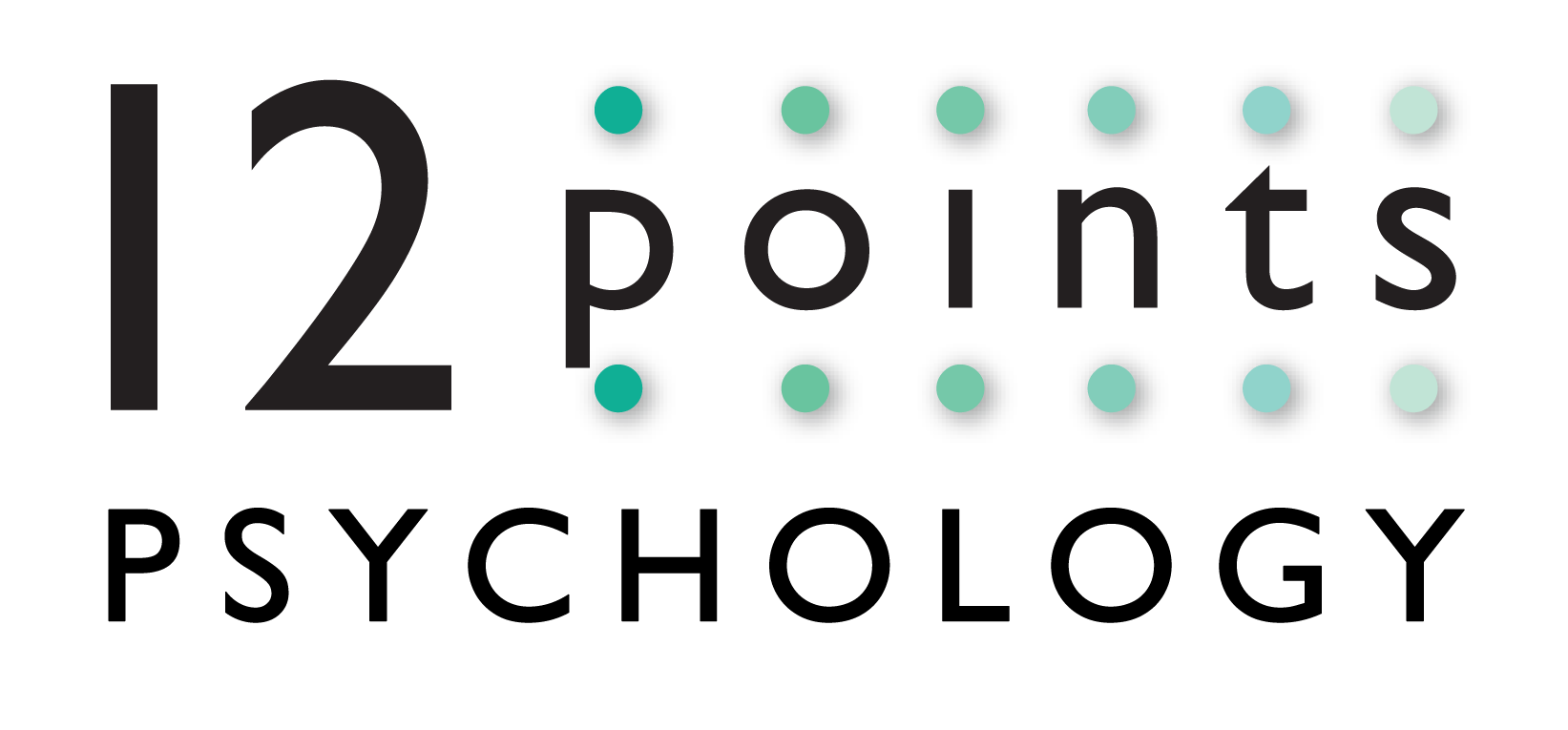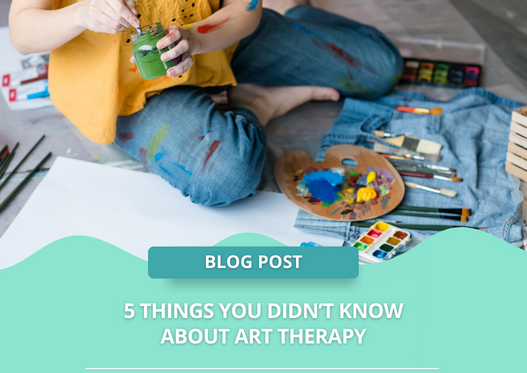Jessica Jepson is the newest addition to the 12 Points team and as well as being an experienced counsellor, she is also a qualified art therapist! Now my first reaction to that was, “such a good idea, but a pity I can’t draw” but as it turns out, the ability to paint the next Cistine Chapel is NOT a pre-requesite for particpating in and getting a lot out of art therapy, so here, Jessica busts some of those myths and helps you figure out if Art Therapy may be right for you. – Danielle Graber (Director)
Did you know?
That the old saying, “All work and no play makes Jack a dull boy” is rooted in brain science!?
This is because our brains are split into two halves, called hemispheres, and each side has a collection of tasks they excel at. The left hemisphere is the analytical half of your brain and it’s really good at organising your day, helping you study or work and manage competing priorities and task order (like, putting on your socks before you put on your shoes!). Basically, it’s where logic and reasoning live.
The right hemisphere is where our emotions, intuition and creativity live and when we’re kids, that side is bursting at the seams with ideas and play and imagination! But as we get busier and more pre-occupied with ‘grown-up’ stuff, we can lose our connection with the right-side of our brain and this can impact our ability to identify and regulate our emotions as well as our ability to connect socially with other people. Anyone who has ever tried to “think” their way out of emotional pain can tell you the dangers of losing that connection.
Engaging in Art Therapy helps to synch both the right and left hemispheres of your brain so you start to use your whole brain on a much more regular basis. This can have incredibly positive effects on your overall sense of well-being and connection to self and others.
What’s more, engaging in a creativity-based session can have a similar effect on the brain as a meditation session – moving you into a more relaxed state of mind. This can facilitate greater calmness, increased insight, and improve your sense of self-worth.
Read on to learn more about how Art Therapy works to enhance this whole brain connection.

1. Do you have to be good at art to do Art Therapy?
No! You most definitely do not have to be good at art to enjoy the benefits of Art Therapy. In fact, sometimes, when people are incredibly talented at drawing or painting, they may find it difficult to let go during the Art Therapy process. There are no rules or expectations on making a piece of work during a session. You are working with your intuition to create and form shapes and images. You don’t have to draw a vase of flowers or a bowl of fruit! Just let go and enjoy the process. There is no judgment, and your images are not analysed to diagnose an issue.
2. What is Art Therapy?
Art Therapy is an alternative and/or complementary addition to traditional “talk therapy” which may include drawing, painting, sculpting, or making a collage in session. This facilitates non-verbal communication and connection with the right-side of your brain, which allows you to connect to deeper, or unconscious parts of yourself. By doing this, it provides space for growth, insight, healing, and transformation.
3. What is Art Therapy good for?
Art Therapy can improve self-esteem, increase self-awareness, help you gain a deeper understanding of yourself, and enhance your connection to yourself and others. Here are some of the main reasons people may engage in Art Therapy.
– Improve mental health and wellbeing
– Manage anxiety and depression
– Overcome trauma
– Express emotions
– Connect with others
– Improve communication
– Improve self-esteem
– Manage behaviours
– Reduce stress
– Overcome grief and loss
– Heal from PTSD
– Improve insight and awareness
4. What happens during an Art Therapy session?
An Art Therapy session is designed to be a safe space where you can express yourself verbally or non-verbally with your therapist. Each session is tailored to your individual needs. Before the process starts, there is often an intention on what it is you are going to create. This is discussed before you begin with your therapist and is in alignment with why you are seeking therapy. Your therapist may do a mindfulness relaxation technique before starting to help relax your nervous system before you begin. Or it may be more spontaneous if you are feeling strong emotions and need a sense of release. After you have created your artwork you and your therapist will reflect using visual and verbal communication to promote a sense of knowing and transformation. Most people feel a shift within their emotional state when participating in Art Therapy and often describe the experience as cathartic and healing.
5. Is Art Therapy right for you?
Heaps of research show how effective Art Therapy is for improving psychological health and well-being, but there’s no ‘right or wrong’ client who may benefit from this creative therapy. It may be especially useful for you through if:
- you’ve struggled to express yourself verbally in relationships or even in previous therapy, or
- the idea of traditional “talk therapy” just seems too overwhelming or scary or
- you feel the need for more calm and balance in your life but can’t stand traditional meditation, or
- you’re someone who already likes to express themselves via their creativity and want to continue working that way.
But if you are curious, the best way to find out is to just give it a shot. So if you would like further information or to make a booking, please contact us on 03 8799 3907 or email intake12points@gmail.com
Jessica Jepson
Counsellor & Art Therapist

